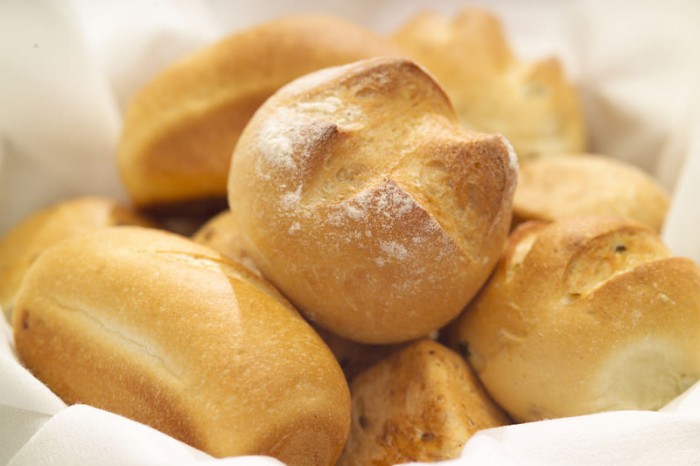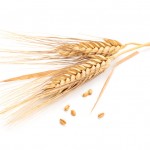Recipe supplied by the Grain Chain www.grainchain.com
Being able to bake your own bread is such a wonderful skill to have. And there really is nothing like the smell of freshly baked bread.
If you’re making this in cookery club you can always make up to the final rising stage and then send the unbaked rolls home with the children to bake at home. Just make sure you send home temperature and timings with them.
Skills Check
Follow a recipe; follow food safety & hygiene rules; tidy away; mix to form a bread dough; knead; shape dough; use a jug to measure liquids; use weighing scales.
Allergens
Wheat | Gluten
(Please note the allergens listed are indicative only. Allergens vary depending on brand; check the labels on the products you use.)
Equipment
Measuring jug, scales, baking tray, mixing bowl, wooden spoon, clean tea towel.
Ingredients (makes 4 rolls):
- 200g strong white flour, plus extra for kneading
- 50g strong wholemeal flour
- 1/2 tsp salt
- 7g sachet of fast action dried yeast
- 150ml warm water
Method
- Preheat the oven to 220°C or gas mark 7. Line or grease the baking tray.
- Place the flours and salt into the mixing bowl.
- Stir in the yeast.
- Make a well in the middle of the flour mixture and add the warm water. Mix to form a soft dough.
- Sprinkle flour on to a clean work surface and place the dough on the surface.
- Knead the dough for 10 minutes.
- Divide the dough into 4 pieces and shape into rolls.
- Cover the rolls with a clean tea towel and leave to prove for 30 minutes in a warm place until they double in size.
- Bake for 10-15 minutes until golden brown.
So thinking about bread rolls...

Nutritional Information
| - | Energy | 756KJ/178kcal | 11% |
| Low | Fat | 0.6g | <1% |
| Low | Saturates | 0.1g | <1% |
| Low | Sugars | 0.2g | <1% |
| Med | Salt | 0.5g | 8% |
per 80g serving
% of an adult's reference intake
Typical values per 100g: Energy 945KJ / 223kcal
Notes
A traffic light system is used on nutrition labels to make it easier to see which foods and drinks are lower in calories, fat, sugar and salt. Try and choose more ‘greens’ and ‘ambers’ and fewer ‘reds’, and stick to smaller portions of ‘reds’.
Just because a recipe or a food has a red traffic light doesn't mean you shouldn't eat it. Understanding why a food or recipe might have a red light can be helpful. For example oily fish is high in total fat and so any recipe containing oily fish is likely to be ‘red’ for fat. But it is recommended that we eat oily fish at least once a week because the type of fat it contains is beneficial for our health.
% Reference Intakes are also shown. Reference Intakes are guidelines about the approximate amount of particular nutrients and energy required for a healthy diet (based on an average-sized woman doing an average amount of physical activity). Most children will require less than these Reference Intakes. The contribution of one serving of a food or drink to the Reference Intake for each nutrient is expressed as a percentage.




